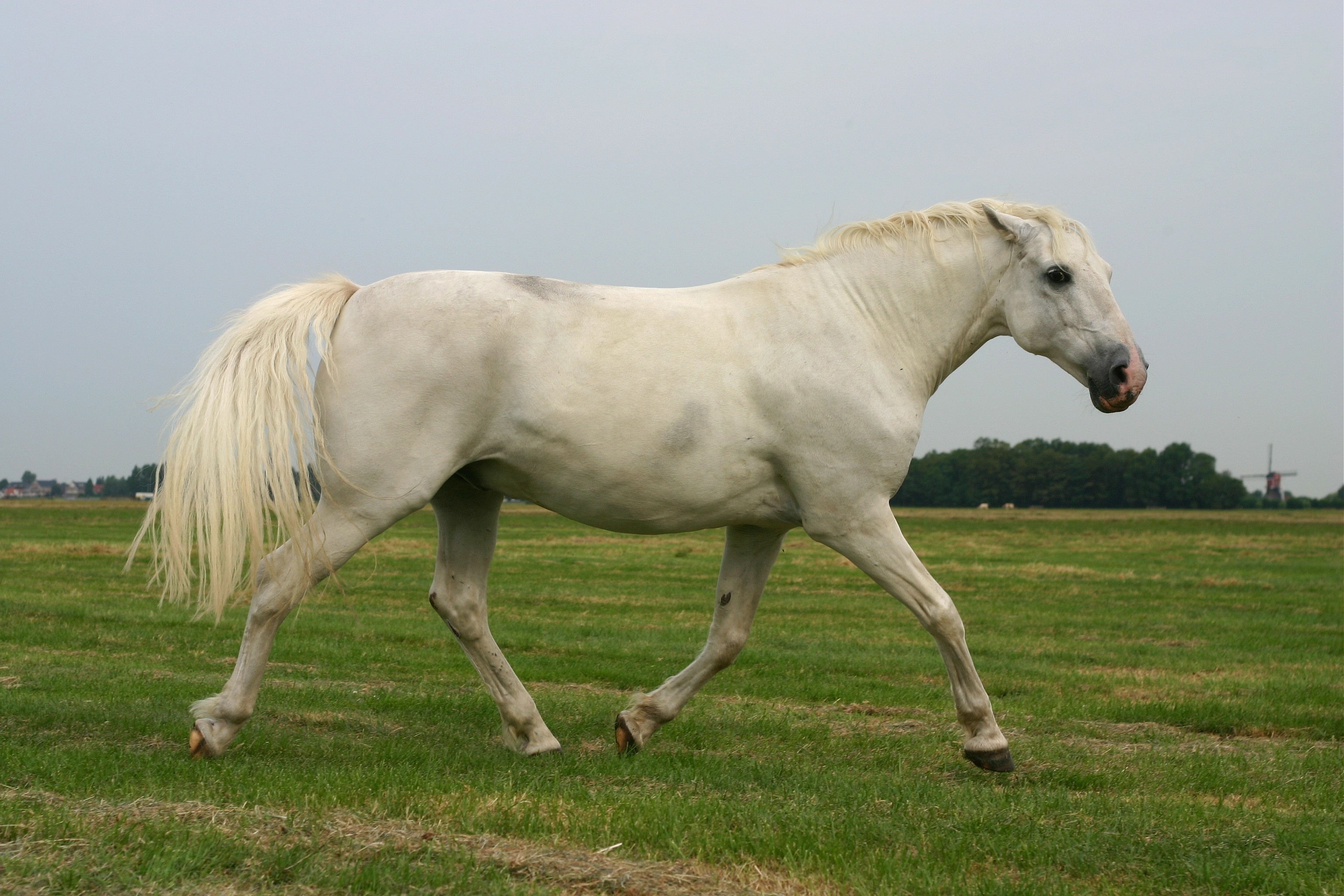A late-in-life change in gaits?
- May 1, 2024
- ⎯ Bruce Connolly, DVM
Q: I have observed an odd behavior in my older horse, and I hope you can provide some insights. I am providing a retirement home for Roy, an ex-police horse. He is now 26 years old and, although we can’t be certain of his breeding, his papers describe him as a Thoroughbred/Clydesdale cross. Within the last year, Roy has progressively developed a gaited style of moving at slower speeds, and he cannot be urged to accelerate, except of course, on the way home from a trail ride! The last two times he’s been ridden, by myself then by my trainer, he refused to perform even a standard trot and loped instead.

I am curious about his change in gait. I know that gaiting in horses is associated with a truncating mutation in the DMRT3 gene, but why would this trait only now be expressed in Roy? Outside of genetics, has this change been described in older horses? Or could it be that Roy has a gaited horse in his bloodline that is only now being revealed?
A: Roy sounds like a remarkable horse. Twenty-six is fairly old for a big horse, and police horses often work hard during their lifetime. I am impressed that Roy is still able to work for you.
Your description of Roy’s movements doesn’t sound like a gaited horse as much as a horse who is having trouble still being an athlete. Going slow and loping instead of trotting can be adaptations to minimize pain. I think you need to have Roy thoroughly examined by an equine veterinarian.
There isn’t enough information here to speculate on the causes of any potential physical issues. Arthritis is an obvious possibility in an aging horse who once worked hard. But other things to consider might include foot pain, neuromuscular issues such as equine0 protozoal myeloencephalitis (EPM), or some dysfunction stemming from pain in the back or pelvis.
Depending on your veterinarian’s findings, it is possible that treatments may be able to make Roy more comfortable and maybe even enable him to keep working for a few more years. Or maybe it is time for Roy to enjoy some well-deserved time off.
Bruce A. Connally, DVM, MS
Wyoming Equine
Berthoud, Colorado
This article first appeared in EQUUS #480
Don’t miss out! With the free weekly EQUUS newsletter, you’ll get the latest horse health information delivered right to your in basket! If you’re not already receiving the EQUUS newsletter, click here to sign up. It’s *free*!





